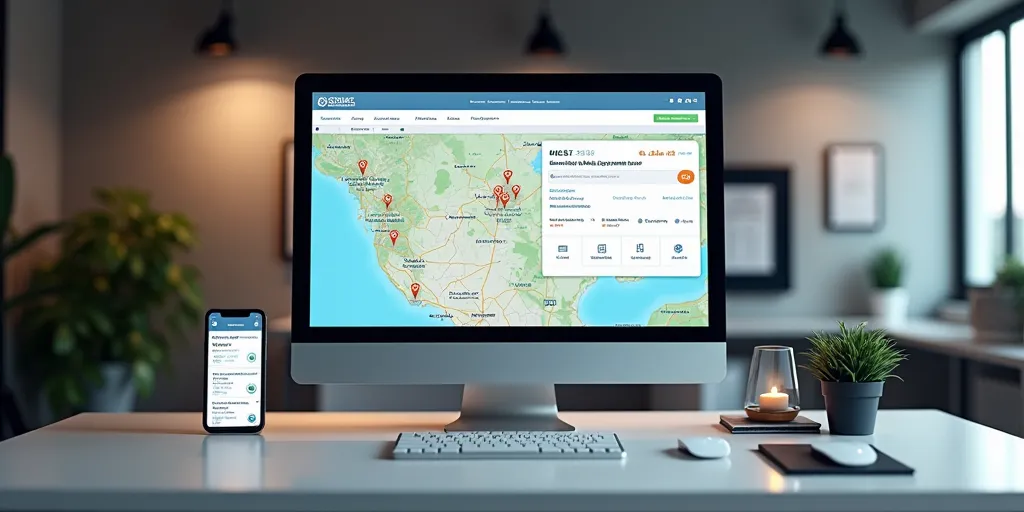To conduct a local SEO audit, start by analyzing your website’s on-page elements such as title tags, meta descriptions, and headers to ensure they are optimized for local keywords. Next, assess your website’s content to ensure it is relevant, informative, and includes local keywords.
Check for any duplicate content or thin pages that may be harming your SEO efforts. Evaluate your website’s backlink profile to ensure you have high-quality, relevant links pointing to your site. Additionally, verify that your NAP (name, address, phone number) information is consistent across all online directories and listings.
Utilize tools like Google My Business to optimize your local listing and ensure it is complete and accurate. Monitor your website’s performance using tools like Google Analytics to track traffic, conversions, and other key metrics.
Finally, regularly review and update your local SEO strategy to stay ahead of the competition and continue to improve your website’s visibility in local search results.
What on-page elements should be optimized for local seo?

When optimizing for local SEO, there are several on-page elements that should be focused on to improve your website’s visibility in local search results. Firstly, it is crucial to include your business’s name, address, and phone number (NAP) on every page of your website.
This information should be consistent across all online platforms to build trust with search engines and potential customers. Additionally, optimizing your meta tags, including title tags and meta descriptions, with local keywords can help improve your website’s relevance for local searches.
Creating unique and informative content that is tailored to your local audience can also boost your website’s visibility in local search results. Furthermore, optimizing your website’s images with alt text that includes local keywords can improve your website’s ranking in image searches.
Lastly, creating a Google My Business profile and optimizing it with accurate information, photos, and reviews can significantly impact your local SEO efforts. By focusing on these on-page elements, you can enhance your website’s visibility in local search results and attract more local customers to your business.
How can you ensure your website’s content includes local keywords?

To ensure that your website’s content includes local keywords, it is essential to conduct thorough research on the specific keywords that are relevant to your target audience in the local area. Start by identifying the local terms and phrases that are commonly used by people in the region you are targeting.
This can be done through tools like Google Keyword Planner or by analyzing the search terms that are driving traffic to your competitors’ websites. Once you have a list of local keywords, strategically incorporate them into your website’s content, including in the meta tags, headers, titles, and throughout the body of your pages.
It is important to ensure that the keywords are seamlessly integrated into the content to maintain readability and user experience. Additionally, consider creating location-specific landing pages or blog posts that focus on topics related to the local area to further optimize your website for local search.
By consistently using local keywords in your website’s content, you can improve your chances of ranking higher in local search results and attracting more relevant traffic to your site.
What tools can help optimize your local listing on google my business?

Optimizing your local listing on Google My Business can greatly benefit your business by increasing visibility and attracting more customers. There are several tools that can help you achieve this goal. Firstly, utilizing Google My Business itself is essential.
Make sure your listing is complete and accurate, including your business name, address, phone number, and website. Regularly updating your business hours, photos, and responding to customer reviews can also improve your listing’s performance. Additionally, using Google Posts to share updates, promotions, and events can help engage with potential customers.
Another useful tool is Google Insights, which provides valuable data on how customers find and interact with your listing. This information can help you make informed decisions on how to optimize your listing further.
Furthermore, utilizing Google Maps can enhance your local SEO and make it easier for customers to find your business location. Lastly, tools like Moz Local or BrightLocal can help you manage and monitor your online presence across multiple platforms, ensuring consistency and accuracy in your business information.
By utilizing these tools effectively, you can optimize your local listing on Google My Business and attract more customers to your business.
Why is it important to regularly review and update your local seo strategy?

Regularly reviewing and updating your local SEO strategy is crucial for several reasons. Firstly, the digital landscape is constantly evolving, with search engine algorithms frequently changing. By staying up-to-date with these changes, you can ensure that your website remains visible and competitive in local search results.
Additionally, consumer behavior and trends are always shifting, so it’s essential to adapt your strategy to meet the needs and preferences of your target audience. By regularly reviewing and updating your local SEO strategy, you can optimize your website for relevant keywords, improve your online visibility, and attract more local customers.
Furthermore, monitoring the performance of your SEO efforts allows you to identify what is working well and what needs improvement, enabling you to make data-driven decisions to enhance your strategy.
Overall, staying proactive and regularly updating your local SEO strategy will help you maintain a strong online presence, drive more traffic to your website, and ultimately, increase your business’s success in the digital realm.
